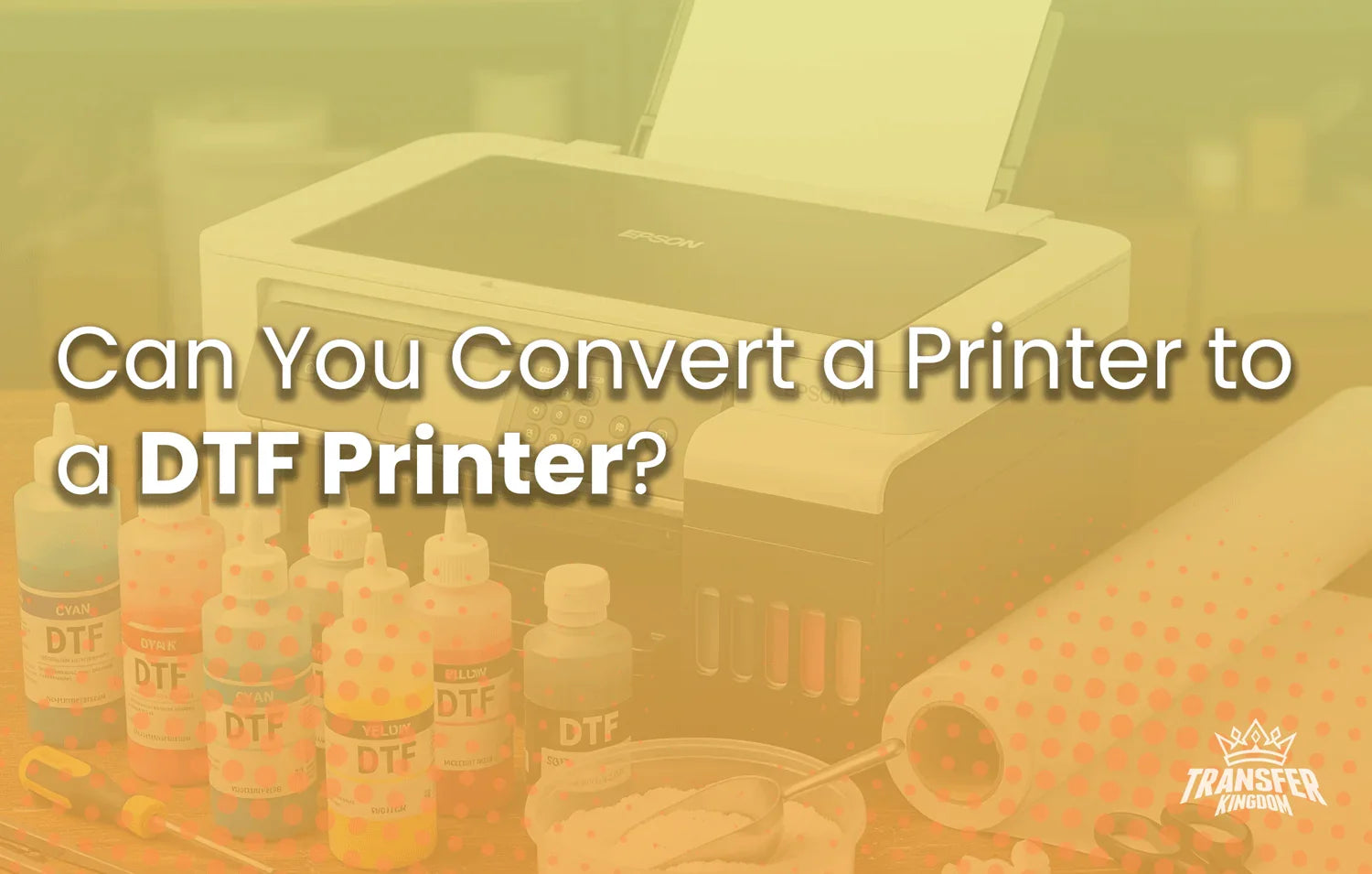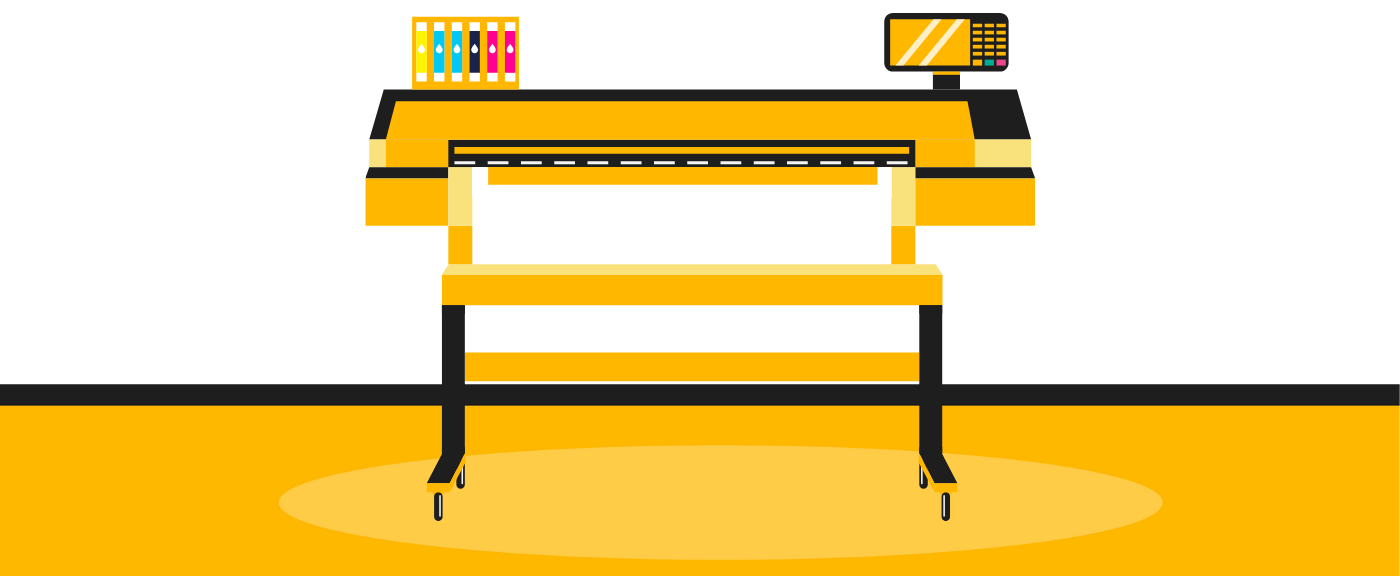Can You Convert a Printer to DTF? The Real Answer (2025)

Table of Content
Can You Convert a Printer to DTF? A Complete Guide to DIY DTF
In the world of custom apparel, the allure of Direct-to-Film (DTF) printing is undeniable. But professional DTF printers represent a significant investment, which leads to a very common question: "Can I just convert a printer to DTF myself?"
The short answer is yes, it is technically possible to convert certain standard inkjet printers for DTF use. However, the process is complex, carries significant risks, and is not as simple as just swapping out the ink. This guide will walk you through the realities of a DIY DTF conversion, including which printers work, what the process involves, and whether it’s the right choice for you versus the simpler, more reliable alternative.
Printer Compatibility: Not All Printers Are Created Equal
The single most important factor in a potential conversion is the printer's printhead technology. Only one type will work.
Piezoelectric Printheads (Required): These printheads, found in most Epson printers (like the popular L1800, P400, or certain EcoTank models), work by mechanically pushing ink droplets onto the page. They are robust and can handle the thicker, more viscous pigment inks used for DTF without being easily damaged.
Thermal Printheads (Incompatible): Found in most HP, Canon, and Brother printers, these printheads work by boiling a tiny amount of ink to create a vapor bubble that forces the ink out. This intense heat would cook the specialized DTF ink, causing it to clog and permanently damage the printhead. You cannot convert a thermal inkjet printer to DTF.

The Conversion Process: What Does It Actually Take?
To convert a printer to DTF is more than a simple ink swap; it's a significant hardware modification. While kits are available, the process generally involves these steps:
Gutting the Printer: You must remove several internal components that are designed for paper printing. This often includes the "pizza wheels" (small, star-shaped wheels that guide paper) because they would smear the wet ink on a DTF film.
Flushing the Entire Ink System: Every trace of the original printer ink must be meticulously flushed from the printhead and ink lines using a specialized cleaning solution. Any remaining original ink will react with the DTF ink and cause catastrophic clogs.
Installing a DTF Ink System: This usually involves installing either refillable cartridges or a Continuous Ink Supply System (CISS) that can handle the thicker DTF inks. This system must also support white ink.
Specialized RIP Software: You cannot use the standard printer driver. You must purchase and install Raster Image Processor (RIP) software, like AcroRIP. This software is essential for controlling the ink flow, managing the white ink underbase, and printing the color and white layers correctly.
Constant Maintenance: White DTF ink contains heavy titanium dioxide pigments that settle quickly and cause clogs. A converted printer requires daily shaking of the white ink and frequent printhead cleanings to remain functional.
For a clearer understanding of the standard professional process, you can read our foundational DTF Printing 101 Guide .

Risks vs. Rewards: The Reality of a DIY DTF Printer
Before you decide to convert a printer to DTF, it's crucial to weigh the potential benefits against the very real risks.
| Category | The "Reward" (The Promise) | The Risk (The Reality) |
| Cost | Significantly lower initial cost than a professional DTF machine. | High risk of destroying the printer, wasting expensive ink, and voiding the warranty. The cost of failed prints and maintenance can add up quickly. |
| Control | Full control over every aspect of the printing process. | You become your own technician. Troubleshooting clogs, software errors, and mechanical failures is a constant battle. |
| Quality | The potential to produce high-quality, professional transfers. | Achieving consistent quality is extremely difficult. Most DIY setups struggle with banding, color inaccuracies, and white ink issues. |
| Time | The ability to print on-demand from your own workspace. | The process is slow and requires constant tinkering. Time spent on maintenance and troubleshooting is time not spent growing your business. |
For many creators, the path of a DIY conversion is filled with frustration. That's why ordering professional, ready-to-press custom DTF transfers has become the go-to solution.
The Professional Alternative: Ordering Ready-to-Press Transfers
Instead of taking on the immense technical challenge of converting and maintaining a printer, you can bypass the entire printing process. By ordering from a service like Transfer Kingdom, you get all the benefits of DTF with none of the hassle.
No Technical Headaches: No clogs, no software errors, no maintenance.
Guaranteed Professional Quality: Printed on commercial-grade equipment for perfect results every time.
Cost-Effective: Pay only for the transfers you need, whether it's one or one thousand.
Focus on Your Business: Spend your valuable time creating designs and growing your brand, not fixing a printer.
Ultimately, you only need a quality heat press to create stunning custom apparel with professionally made transfers.
Frequently Asked Questions (FAQ)
Is it cheaper to convert a printer or buy DTF transfers?
While the upfront cost to convert a printer to DTF seems cheaper, when you factor in the cost of wasted ink, ruined film, failed garments, and the value of your time spent on maintenance, ordering transfers from a service is often more cost-effective and always more reliable.
What Epson printer is best for DTF conversion?
The Epson L1800 has historically been the most popular choice for DIY conversions due to its A3 size capability and 6-channel printhead, making it easier to accommodate CMYK and two white channels.
Can I use my existing sublimation printer for DTF?
No, not directly. You would have to completely flush the sublimation ink system and replace it with DTF inks, which is a difficult and risky process. These two methods have key advantages and limitations that make them distinct.
What is RIP software and why do I need it?
RIP software is essential because it tells the printer how to print the white ink layer behind the color layer. Standard printer drivers cannot do this, and without the white underbase, your designs would be invisible on dark fabrics for DTF transfers.
How often do you really have to clean a converted DTF printer?
At a minimum, you need to perform a printhead cleaning daily to prevent the white ink from settling and causing permanent clogs. Many users find they spend more time maintaining their DIY setup than actually printing.
What's the biggest challenge with a DIY DTF printer?
By far, the biggest challenge is managing the white ink. It clogs constantly, requires daily agitation, and is the source of most print quality issues, a common problem discussed in our DTF troubleshooting tips.
Can I convert an HP or Canon printer to DTF?
No. HP and Canon printers use thermal printheads that boil the ink. This technology is incompatible with the chemistry of DTF inks and will destroy the printhead.
What is a DTF conversion kit?
A DTF conversion kit typically includes refillable ink cartridges or a CISS, DTF inks, and cleaning solutions. However, it does not eliminate the technical skill required, nor does it include the essential RIP software or a way to create artwork, which is detailed in our guide on how to create custom transfers.
Does a converted printer produce the same quality as a professional one?
Rarely. While a perfectly maintained DIY setup can produce good prints, it cannot match the consistency and color accuracy of professionally produced transfers, which you can order by size or on a gang sheet.
Is it worth it to convert a printer to DTF?
For most people, the answer is no. The time, frustration, and hidden costs associated with a DIY conversion outweigh the initial savings. Ordering professional transfers is a more efficient, reliable, and scalable path for building a custom apparel business.








